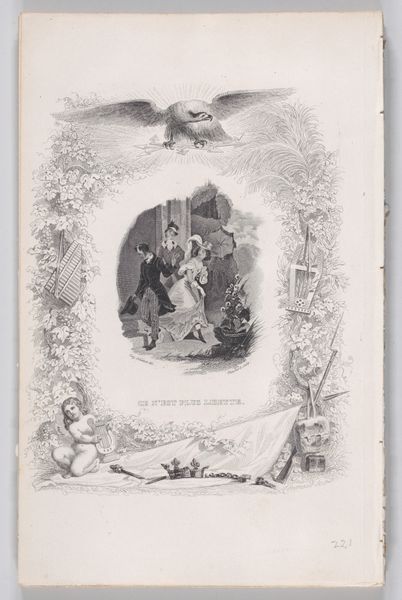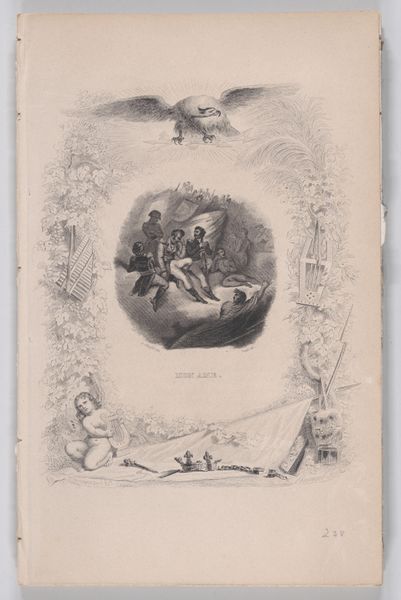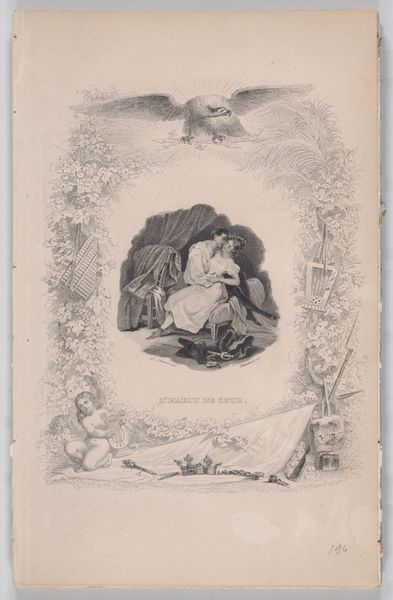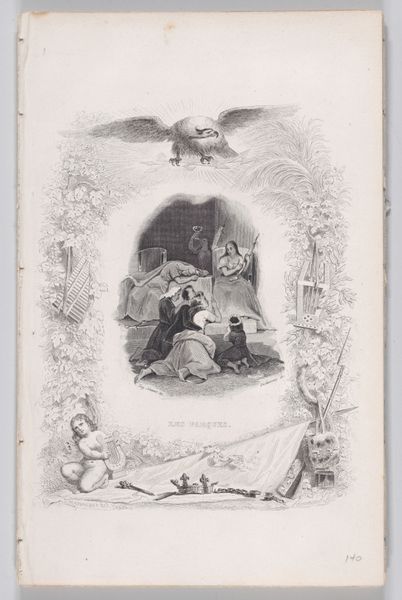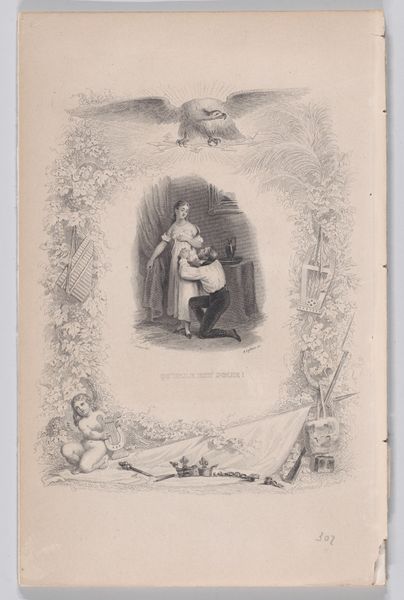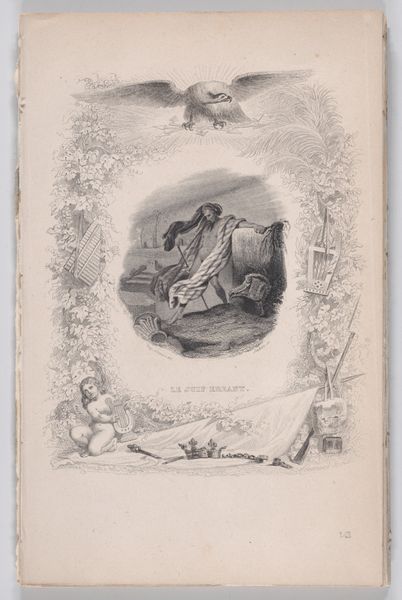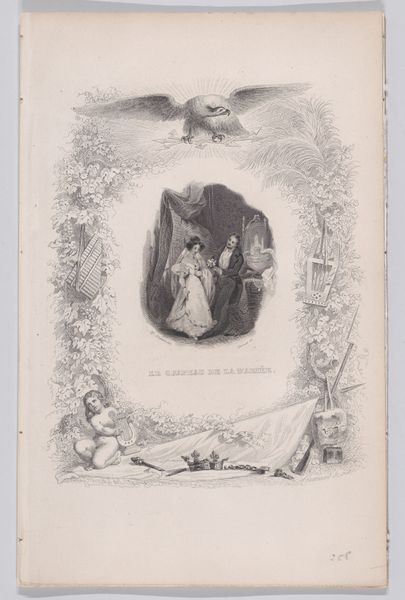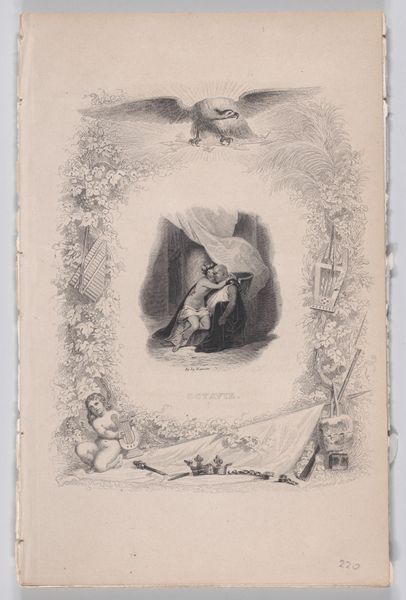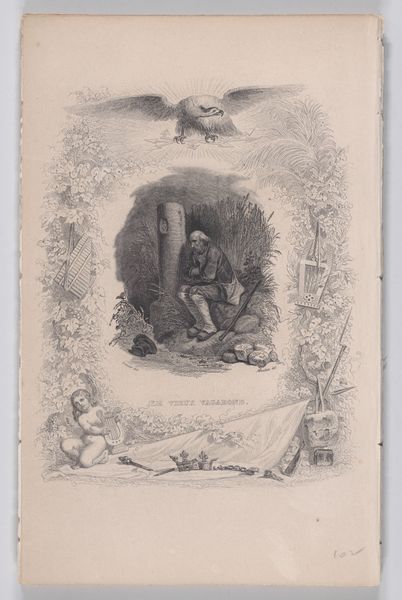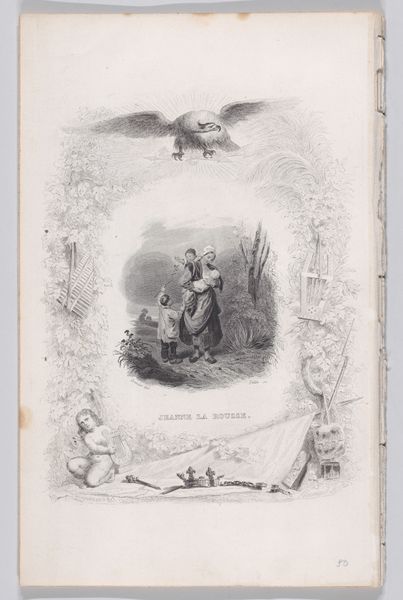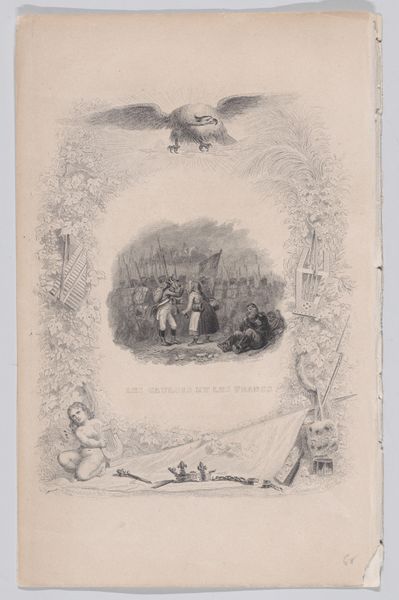
"The Goddess Liberty" from The Songs of Béranger 1829
0:00
0:00
drawing, print, engraving
#
drawing
#
allegory
# print
#
figuration
#
romanticism
#
line
#
history-painting
#
engraving
Dimensions: Sheet: 8 5/8 × 5 1/2 in. (21.9 × 14 cm)
Copyright: Public Domain
Curator: Immediately, I'm struck by the dramatic composition; it’s a fairly small piece, an engraving really, but teeming with imagery. Editor: Yes, this is "The Goddess Liberty" from The Songs of Béranger, created by Camille-Joseph-Etienne Roqueplan in 1829. It’s currently held here at the Metropolitan Museum of Art. We see an allegory of Liberty, surrounded by potent symbols of both freedom and oppression. Curator: Those emblems are fascinating. Look at the broken crown and chains at Liberty’s feet! It speaks so powerfully to the socio-political turbulence of the time. And then above, an eagle watches. Editor: Absolutely. The means of production are also notable. Engravings like this one were often made to reproduce imagery widely, thus influencing public opinion. The fine, delicate lines are what really catch my eye; consider the craft needed to convey such a depth of detail in this scale! Curator: I agree. The delicate lines almost soften the revolutionary message. What truly captures my attention is how this piece served the dissemination of Béranger's songs, effectively giving those songs a visual language to fuel nationalistic fervor. The print makes those lyrics accessible, amplifying their political power! Editor: And yet, doesn’t the very act of framing Liberty within a decorative border, a frame of foliage and a lyre-playing cherub, also domesticate the revolutionary potential? Almost confining a force of radicalism? Curator: That's a compelling observation. The imagery is clearly aimed at galvanizing the public, promoting this Goddess figure as a beacon of liberation and empowerment in a world undergoing massive transformations. But as you suggest, perhaps the composition itself, as an object sold, somewhat contains its own message. Editor: Yes. The piece is as much about aesthetic presentation as it is political advocacy, reflecting the commodification of even revolutionary ideals through material objects. Curator: Precisely. An instance of how the manufacturing and dispersion of art itself became a vehicle to engage and, perhaps, temper the tumultuous climate of the era. Editor: Reflecting upon it, both the overt symbolism and the nuances of its material construction allow us to look at broader forces at play: how society uses the means of representation to process its anxieties. Curator: Indeed. Considering "The Goddess Liberty" as an art object intertwined within a tapestry of historical currents encourages a multifaceted view of the revolutionary fervor and artistry that shaped that pivotal period.
Comments
No comments
Be the first to comment and join the conversation on the ultimate creative platform.

